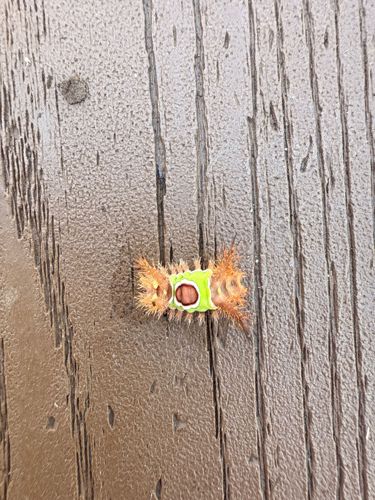Saddleback Caterpillar
Scientific Name: Acharia stimulea
Order & Family: Lepidoptera (Moths and Butterflies), Limacodidae (Slug Caterpillar Moths)
Size: Saddleback caterpillars typically range from 1 inch (2.5 cm) to 1.5 inches (3.8 cm) in length.

Natural Habitat
The Saddleback Caterpillar is typically found in deciduous forests, woodlands, gardens, and orchards, particularly in areas with a variety of host trees and shrubs. They are native to eastern North America.
Diet & Feeding
The primary diet of the Saddleback Caterpillar consists of the leaves of a wide variety of deciduous trees, shrubs, and even some palms. Common host plants include oak, cherry, maple, elm, citrus, dogwood, and corn.
Behavior Patterns
As a caterpillar, it feeds on host plants. The stinging spines are a defensive mechanism against predators. After feeding, it will pupate and eventually emerge as a moth. The moths are nocturnal and do not feed.
Risks & Benefits
Potential Risks: The most significant risk is its venomous spines. Contact with these spines can cause a painful sting, characterized by burning, itching, redness, swelling, nausea, and sometimes a rash. The severity of the reaction varies among individuals. Potential Benefits: As part of the ecosystem, these caterpillars contribute to the food chain, serving as a food source for birds and other predators. The adult moths are pollinators, though not as significant as bees or butterflies.
Identified on: 8/15/2025